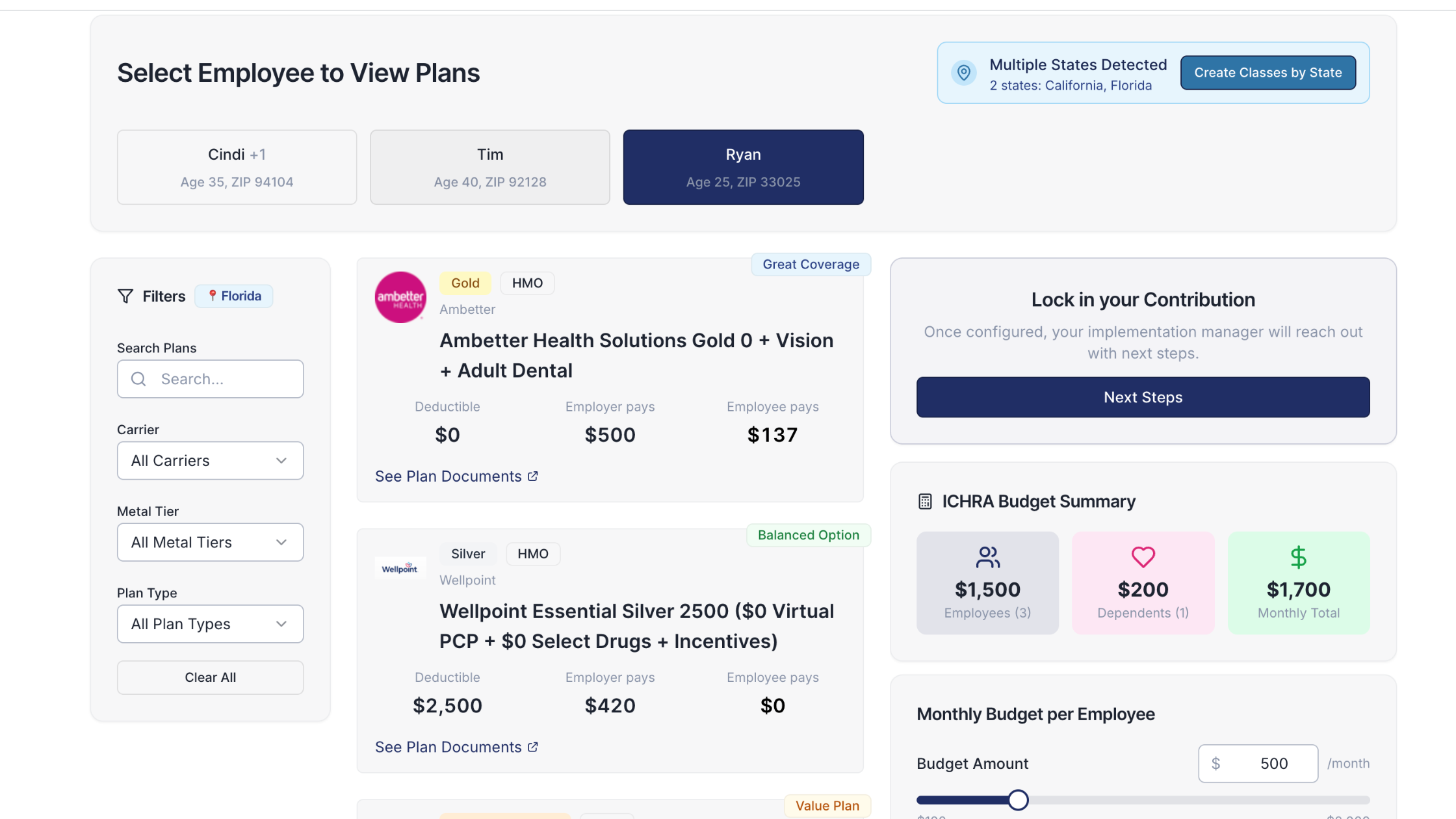What is Waiting Period in Health Insurance

Understanding the waiting period in health insurance is essential for anyone responsible for employee benefits or advising clients on health plans. Whether you’re a benefits broker at a national firm or a CHRO at a growing company, knowing the details of insurance waiting periods helps you set clear expectations, avoid surprises, and select the right coverage for your team.
This article breaks down what a waiting period is, why it exists, the different types you’ll encounter, and how to manage them—using plain language and practical examples. We’ll also answer the most common questions employers and brokers ask about waiting periods in health insurance.
What Is a Waiting Period for Insurance?
A waiting period in health insurance is the time after purchasing a policy during which certain medical expenses are not covered. In other words, if you or your employees need care for specific conditions during this window, the insurer will not pay the claim. The waiting period starts from the policy’s effective date and can vary based on the type of coverage, the insurer’s rules, and the condition being treated.
Key points:
- The insurance waiting period applies to new policies and certain benefits within a policy.
- Coverage for some illnesses, procedures, or pre-existing conditions only kicks in after the waiting period ends.
- The length and rules of the waiting period are always spelled out in the policy documents.
Why Do Health Insurance Waiting Periods Exist?
Insurance companies use waiting periods to manage risk and prevent misuse. If there were no waiting periods, people could buy insurance only after discovering a costly illness, file a claim immediately, and then drop the coverage—making the system unsustainable for everyone.
Waiting periods help ensure that:
- People buy insurance before they need it, not just when they know they’ll need expensive care.
- Insurers can offer lower, more stable premiums by spreading risk fairly across all policyholders.
- The system remains fair for both healthy and high-risk individuals.
Types of Waiting Periods in Health Insurance
Waiting periods aren’t one-size-fits-all. Different benefits and medical conditions have their own timelines. Here are the most common types you’ll encounter in U.S. health insurance plans:
Initial Waiting Period
- What it is: The standard waiting period that applies to most new policies.
- How long: Usually 30 days from the policy start date.
- What’s covered: No claims are accepted during this time except for accidental hospitalization.
- Purpose: Prevents immediate claims right after buying a policy.
Pre-Existing Condition Waiting Period
- What it is: Applies to health issues you had before buying the policy.
- How long: Typically 1 to 4 years, depending on the insurer and condition.
- What’s covered: Claims related to these conditions are only covered after the waiting period ends.
- Example: Diabetes, hypertension, or asthma diagnosed before the policy purchase.
Waiting Period for Specific Diseases or Procedures
- What it is: Applies to certain illnesses or surgeries named in the policy.
- How long: Usually 1 to 2 years, but can vary.
- What’s covered: Treatments like cataract surgery, hernia repair, or joint replacement may have their own waiting period.
Maternity and Newborn Waiting Period
- What it is: Applies to maternity benefits and newborn coverage.
- How long: Ranges from 9 months to 4 years, depending on the plan.
- What’s covered: Pregnancy, childbirth, and newborn care are only covered after this period.
Critical Illness Waiting Period
- What it is: Applies to conditions like cancer, heart attack, or stroke.
- How long: Often 90 days for initial coverage, with some plans requiring a survival period of 30 days after diagnosis.
- What’s covered: Claims for critical illnesses are only paid after both waiting periods are met.
Accidental Hospitalization Waiting Period
- What it is: For injuries caused by accidents.
- How long: Usually covered from day one or after a very short period (24–48 hours).
- What’s covered: Immediate coverage for accidental injuries, as these are unpredictable.
Health Checkup Waiting Period
- What it is: Applies to routine health checkups included in some plans.
- How long: Typically 1 to 4 years.
- What’s covered: Free or reimbursed annual checkups after the waiting period ends.
How Long Is the Waiting Period in Health Insurance?
The length of the waiting period depends on the type of coverage and the insurer. Here’s a quick overview:
Always check your policy documents for the exact durations, as these can vary by insurer and plan.
What Happens If You File a Claim During the Waiting Period?
If you or your employees file a claim for a condition or benefit still in its waiting period, the insurer will reject the claim. You’ll need to pay for those medical expenses out of pocket until the waiting period ends and coverage begins.
The only common exception is accidental hospitalization, which is often covered immediately.
Can You Reduce or Waive the Waiting Period?
Some insurers offer options to reduce or waive waiting periods, usually for an extra premium. Here are ways to manage or shorten waiting periods:
- Choose plans with shorter waiting periods: Compare policies and select those that fit your needs.
- Negotiate with your insurer: Long-standing relationships or higher premiums may help reduce waiting times.
- Port your policy: If you’ve held a policy with one insurer, switching to another may carry over your waiting period credit.
- Disclose all pre-existing conditions: Always be transparent to avoid claim denials later.
Why Waiting Periods Matter for Employers and Brokers
Understanding waiting periods helps you:
- Set clear expectations with employees about when coverage begins.
- Avoid employee frustration or financial hardship from denied claims.
- Select the right health insurance plans for your workforce, especially if you have employees with chronic conditions or family planning needs.
- Ensure compliance and smooth administration of benefits, especially with flexible options like Individual Coverage Health Reimbursement Arrangements (ICHRA).
Tips for Managing Waiting Periods
- Plan ahead: Buy health insurance before you need it, not after a diagnosis.
- Review policy documents: Know the waiting periods for each benefit.
- Educate employees: Make sure employees understand what’s covered and when.
- Consider longer tenure plans: Longer policies may help avoid frequent renewals and repeated waiting periods.
- Work with an expert: Brokers and HR leaders can help navigate complex waiting period rules.
Health Insurance with No Waiting Period
While most health insurance plans include waiting periods, there are limited scenarios where you can access coverage immediately or with minimal delays.
Immediate Coverage Options:
Accidental hospitalization is the most common exception to waiting periods. Most health insurance plans cover accidents immediately from day one, as these events cannot be anticipated. This means if you're injured in an accident, you can file a claim right away without waiting.
Employer-sponsored group health insurance generally doesn't impose the same waiting periods as individual plans. Under the Affordable Care Act (ACA), group health plans cannot impose a waiting period longer than 90 days . Many employer plans offer coverage that begins even sooner, and some provide immediate coverage from your first day of employment.
Reducing Waiting Periods:
Some insurers offer options to reduce or waive waiting periods, usually for an extra premium . Additionally, if you're switching insurers, you may be able to port your policy to another insurer, which might help reduce the waiting period . This is particularly beneficial if you've already served waiting periods under your previous policy.
It's important to note that while the initial waiting period can sometimes be minimized, specific illness waiting periods and pre-existing condition exclusions typically cannot be waived and remain part of the policy terms.
Final Thoughts
The waiting period in health insurance is a key concept for anyone managing or advising on employee benefits. It’s there to keep coverage fair and affordable for everyone. By understanding the types, durations, and strategies for managing waiting periods, you can help your employees or clients get the most from their health plans—while avoiding surprises.
For U.S. businesses using flexible solutions like ICHRA, working with a partner like Venteur ensures your team gets clear guidance, personalized support, and a user-friendly experience every step of the way.
If you have more questions about waiting periods or want to compare health insurance options for your company, reach out to a trusted benefits advisor or connect with Venteur’s expert team. Your employees’ health—and your peace of mind—are worth it.
You got questions, we got answers!
We're here to help you make informed decisions on health insurance for you and your family. Check out our FAQs or contact us if you have any additional questions.
Most plans have an initial waiting period of 30 days from the start date. During this time, only accidental hospitalizations are usually covered.
The waiting period for pre-existing conditions is usually between 1 and 4 years, depending on the insurer and the specific condition.
Accidental hospitalization is typically covered from day one, with no waiting period required.
- Initial waiting period: 30 days
- Pre-existing conditions: 1–4 years
- Maternity benefits: 9 months–4 years
- Specific diseases: 1–2 years
Some insurers allow you to pay an extra premium to reduce or waive the waiting period for certain benefits. Porting your policy or negotiating with your insurer may also help.
Waiting periods serve as a protective measure for insurance companies to maintain financial stability They help safeguard insurers against individuals who might purchase insurance specifically to claim for pre-existing conditions or planned treatments immediately. This approach prevents adverse selection and helps keep premiums affordable for all policyholders. The waiting period ensures that insurance functions as protection against unforeseen medical events rather than a payment plan for known medical needs.
The timeframe varies depending on the type of coverage and what you're claiming:
- Initial waiting period: Generally 30 days for most claims, though this can range from 0 to 30 days depending on your insurer
- Accidental injuries: Covered immediately with no waiting period
- Pre-existing conditions: Waiting periods can extend from 2 to 4 years
- Critical illnesses: Typically have a waiting period of up to 90 days
- Employer group plans: Maximum 90 days under federal law
Specific diseases like tumors, hernias, and osteoporosis may have their own disease-specific waiting periods which differ from the initial waiting period.
Employers have some flexibility but must comply with federal regulations. Under the ACA, group health plans cannot impose a waiting period longer than 90 days . However, employers can choose to offer coverage with a shorter waiting period or even provide immediate coverage from day one.
It's important to note that employers are not supposed to have a separate probationary period for evaluating employee performance and then start a waiting period afterward . The 90-day maximum is a firm limit, and many employers offer coverage that begins much sooner. Always check your specific employer's policy, as waiting periods can vary based on the insurance carrier, plan, and employer preferences.
Yes, there are distinct differences in how waiting periods apply:
Accidents: Covered immediately with no waiting period. Since accidental injuries cannot be anticipated, most health insurance plans provide coverage from day one .
Illnesses: Subject to waiting periods that vary by type:
- General illnesses: Typically subject to the initial 30-day waiting period
- Specific illnesses: Diseases requiring long-term care like tumors, hernias, and osteoporosis have their own disease-specific waiting periods
- Critical illnesses: Usually have a waiting period of up to 90 days
The initial waiting period applies to all claims excluding accidents, whereas the specific illness waiting period applies only to certain diseases and treatments.
It depends on your plan type and what you're claiming:
Immediate coverage scenarios:
- Accidental hospitalization: Yes, this is often covered immediately from day one Some employer plans: May offer immediate coverage depending on the employer's policy
Delayed coverage scenarios:
- Most medical expenses: You'll need to pay out of pocket until the waiting period ends
- Pre-existing conditions: Require waiting through extended periods before coverage begins
- Specific illnesses: Subject to disease-specific waiting periods
The waiting period is established by the insurance company and is part of the terms and conditions of the plan . Generally, it's not possible to reduce the waiting period of an existing health insurance policy after purchase, though some insurers may offer options to waive or reduce waiting periods for an additional premium at the time of purchase.
Explore more related content
What is Venteur
Explore the best human-first Health Insurance platform
Simple, personalized health benefits
Sign up in minutes, define your contribution, and let your employees choose the health plan that works right for them
Integrations to make everything run smoothly
We'll connect with your payroll and finance systems to make deductions and premium payments seamless
Easy onboarding and off-boarding
In just a few clicks, add your roster and make updates on the fly. We'll handle it from there.
Venteur Certified Brokers to help your employees pick the right plan
Our trusted brokers ensure the best outcomes for employees and employers by unlocking health savings and providing unrivaled plan options.
AI-powered plan recommendations to give you confidence while you shop
Backed by 30 years of healthcare data, Venteur’s AI helps employees compare and choose the best plan for their unique situation.
Compliance and reporting because no-duh!
Venteur manages plan administration, reporting, and compliance so you can focus on growing your business.


